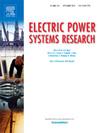基于风险的可解释性增强多场景光伏预测调度优化策略
IF 3.3
3区 工程技术
Q2 ENGINEERING, ELECTRICAL & ELECTRONIC
引用次数: 0
摘要
光伏发电作为应对能源转型和气候变化的关键技术,在电力系统中越来越重要。但其固有的随机性和不确定性对其稳定运行和经济效益提出了挑战。为了解决这些问题,本文提出了一种基于风险的调度优化策略,并结合可解释的多场景光伏预测来减轻这些不确定性。首先,通过使用增强的Copula函数和ISODATA聚类,生成多个联合输出场景来捕获PV不确定性。在此基础上,采用Stacking回归模型提高预测精度,同时采用Shapley Additive Explanations (SHAP)可解释性分析提高模型的透明度和决策能力。为了优化光伏发电调度策略,本文引入了GlueVaR风险度量方法,该方法结合了风险价值(VaR)和条件风险价值(CVaR)的优点,从而精细化风险管理,提高决策的可靠性。实例分析表明,该策略提高了PV预测的可靠性,R²达到0.86,并通过基于shap的分析提高了模型的可解释性。此外,基于gluvar的风险调度将潜在风险降低了约6%,同时保持了电力系统经济性和稳定性之间的平衡。本文章由计算机程序翻译,如有差异,请以英文原文为准。
A risk-based scheduling optimization strategy with explainability enhanced multi-scenario photovoltaic forecasting
Photovoltaic (PV) power generation, as a crucial technology for addressing energy transition and climate change, is increasingly becoming essential for power systems. However, its inherent randomness and uncertainty challenge stable operation and economic efficiency. To address these, this paper proposes a risk-based scheduling optimization strategy with explainable multi-scenario photovoltaic forecasting to mitigate these uncertainties. First, by employing an enhanced Copula function and ISODATA clustering, multiple joint output scenarios are generated to capture PV uncertainty. Building on this, a Stacking regression model is utilized to improve forecasting accuracy, while Shapley Additive Explanations (SHAP) explainability analysis is incorporated to enhance the transparency and decision-making of the model. Furthermore, to optimize the dispatch strategy for PV generation, this paper introduces the GlueVaR risk measurement method, which combines the benefits of Value at Risk (VaR) and Conditional Value at Risk (CVaR), thereby refining risk management and increasing the reliability of decision-making. Case studies demonstrate that the proposed strategy enhances PV forecasting reliability, with the R² reaching 0.86, and improves model explainability through SHAP-based analysis. In addition, the GlueVaR-based risk scheduling reduces potential risk by approximately 6 %, while maintaining a balance between power system economy and stability.
求助全文
通过发布文献求助,成功后即可免费获取论文全文。
去求助
来源期刊

Electric Power Systems Research
工程技术-工程:电子与电气
CiteScore
7.50
自引率
17.90%
发文量
963
审稿时长
3.8 months
期刊介绍:
Electric Power Systems Research is an international medium for the publication of original papers concerned with the generation, transmission, distribution and utilization of electrical energy. The journal aims at presenting important results of work in this field, whether in the form of applied research, development of new procedures or components, orginal application of existing knowledge or new designapproaches. The scope of Electric Power Systems Research is broad, encompassing all aspects of electric power systems. The following list of topics is not intended to be exhaustive, but rather to indicate topics that fall within the journal purview.
• Generation techniques ranging from advances in conventional electromechanical methods, through nuclear power generation, to renewable energy generation.
• Transmission, spanning the broad area from UHV (ac and dc) to network operation and protection, line routing and design.
• Substation work: equipment design, protection and control systems.
• Distribution techniques, equipment development, and smart grids.
• The utilization area from energy efficiency to distributed load levelling techniques.
• Systems studies including control techniques, planning, optimization methods, stability, security assessment and insulation coordination.
 求助内容:
求助内容: 应助结果提醒方式:
应助结果提醒方式:


